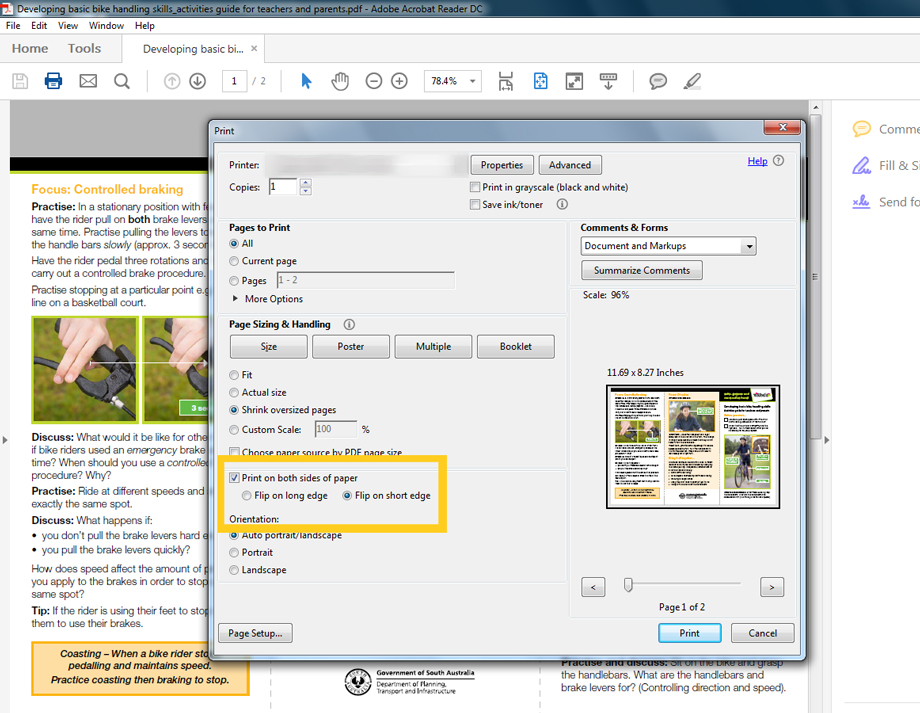
Teaching children basic riding skills
The brochure describes strategies and ideas to teach children basic bike handling skills and support them to develop skills required for on-road riding.
More tips and ideas can be found via the frequently asked questions below.
You might also like to try some of the ideas in the student learning journal.
Frequently asked questions
-
When I print the PDF double sided it comes out upside down on one side. How can I fix this?
Check your printer settings. Make sure that the printer setting indicate to 'Flip on the short side'.
-
I would like to help my child learn basic bike riding skills but I don't have a bike or helmet. Where can I access one?
There may be other families in your school or local community that are happy to sell at a minimum cost or give away children's bikes no longer in use. Talk to you school or friends. The Bicycle Institute of South Australia lists agencies that can donate safe second hand bikes to families in need. Alternatively you can contact Bike SA for information about free bike hire locations across Adelaide.
-
How do I know if the riders bike is roadworthy and the right size?
-
I need to take off the pedals for the bike rider to gain balance through scooting. How do I do that?
Youtube has some simple videos that can show you how to remove the pedals. Alternatively, you could ask a knowledgeable friend or the local bike shop mechanic for assistance.
-
What other activities can I try to help a new bike rider prepare for riding in local streets?
When the rider gains confidence you may like to try:
- Signalling: Play follow the leader. Demonstrate the leaders role by shouting out "left", "right" or "stopping". Once you have yelled out the directional cue extend your arm in the correct direction (left or right turn) or place the palm flat (to indicate stopping). Swap roles and have the bike rider lead, while you follow on your bike.
- Changing gears: Change to a higher or lower gear whilst pedalling. Discuss how changing gears affects the amount of power required to push. Change gears in context i.e. when riding on surface with a slight incline or decline, or to ride fast with less pedal rotations.
- Riding on different surfaces and comparing the difference, e.g. on prickle-free grass, dirt paths and bitumen bike paths. Discuss how the surface affects power required to push as well as brake.
The student learning journal also has a range of tasks and practical ideas to help develop an understanding of safe bike riding and hazard perception. View the intersection answer quiz for information on the safest way to manage common intersections.
-
I think my child is gaining confidence and I would like to plan an enjoyable bike ride together. Are there resources to help me plan a bike ride in quiet local streets or bike paths?
Yes. Try the Cycle Instead Journey Planner. You can select the type of path you feel comfortable riding on as well as facilities you may need along the way such as toilets. Schools can also order Walking and Cycling maps and the ‘New and Rusty Riders Guide’. Ask your school for a copy. If you live in a regional area ask your local Council for advice.



